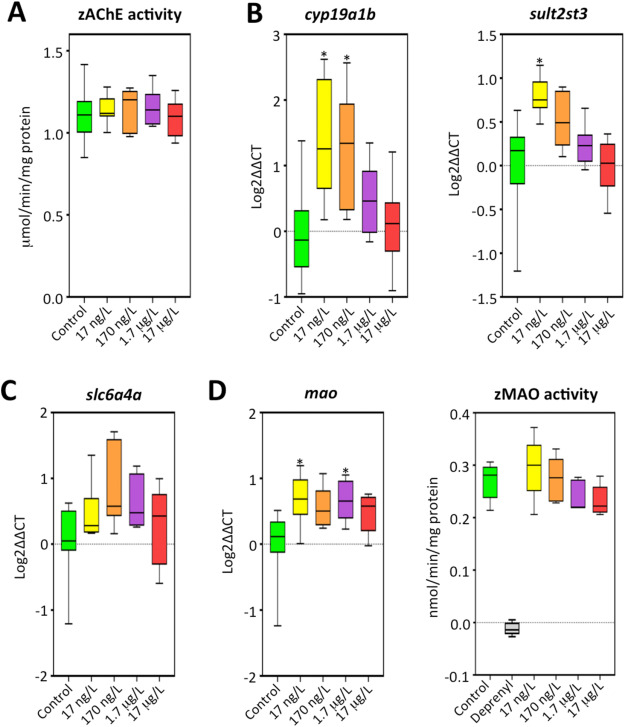Fig. 2 Validation in zebrafish larvae of in silico predicted molecular targets of fenitrothion. (A) Zebrafish acetylcholinesterase (zAChE) activity in control and fenitrothion exposed 8 days-post fertilization zebrafish larvae, showing that the selected concentrations of fenitrothion are not able to induce a significant inhibition of AChE activity (P > 0.05; one-way ANOVA with Dunnett's multiple comparison test). Data from 2 independent experiments (n = 8–9). (B) The potential androgenic or anti-androgenic effect of fenitrothion on zebrafish arvae was assessed by analyzing the expression of cyp19a1b and sult2st3, two well established markers of androgenicity in zebrafish. (C) Expression of slc6a4a (zebrafish SERT) in control and fenitrothion exposed zebrafish larvae. (D) Expression of mao and MAO activity in control and fenitrothion exposed zebrafish larvae. Boxplot representation with the box indicating the 25th and 75th percentiles and the whiskers the maximum and minimum values. The thin line within the box marks the median. *P < 0.05; One way ANOVA followed by Dunnett's multiple comparison test was used for zAChE activity and cyp19a1b, sult2st3 and mao expression, whereas Kruskal Wallis test followed by Dunn's multiple comparison test against the control values was used for slc6a4 expression and MAO activity.
Image
Figure Caption
Acknowledgments
This image is the copyrighted work of the attributed author or publisher, and
ZFIN has permission only to display this image to its users.
Additional permissions should be obtained from the applicable author or publisher of the image.
Full text @ Sci. Total Environ.

